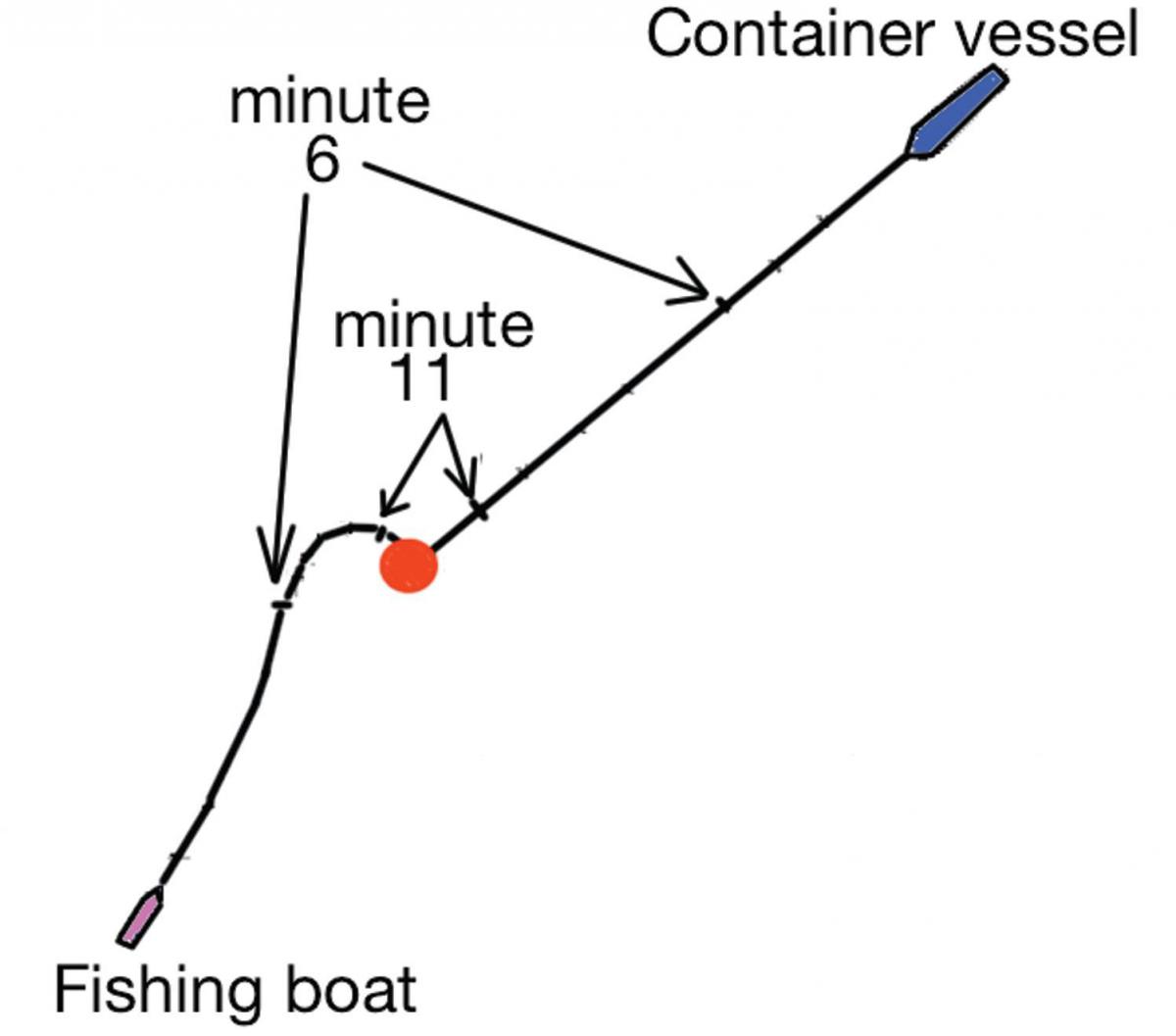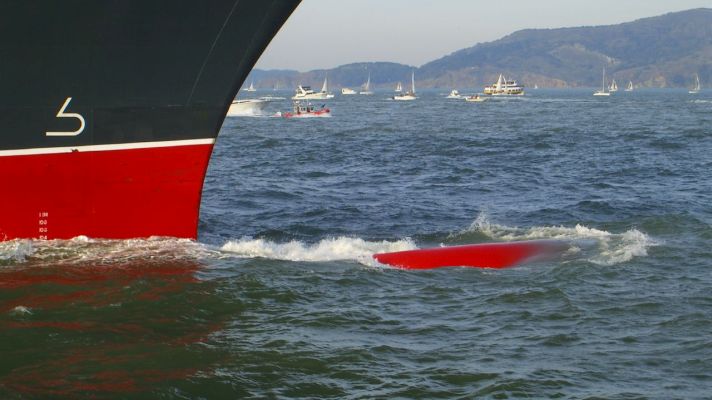(Mars 201909) A container ship was underway on the open sea in darkness and during a rain storm, on a course of 228° and at a speed of almost 17 kt.
As edited from JTSB (Japan) report MA2014-8
The helmsman and OOW were each at a radar but were engrossed in a social conversation with each other. The helmsman sighted the port sidelight of another vessel at a distance of about 0.6nm on the starboard bow and reported the sighting to the OOW. About one minute later, after changing the range of his radar from 12nm to 6nm, the OOW saw the vessel in question and thought it was crossing ahead on the starboard bow – the distance was now about 0.3nm. The OOW ordered 15° to starboard and blew the ship’s horn, then gave the order for hard to starboard.
The other vessel, a fishing boat proceeding at about 8kt, changed course to starboard at the last minute because the OOW on that vessel believed a port-to-port passing was required. Notwithstanding these actions, the container ship collided with the fishing boat. The crew of the fishing boat abandoned into a lifeboat and were later recovered by the container ship. The fishing boat later sank.

Lessons Learned
- Lookout, lookout, lookout. Had a proper lookout been kept on each vessel, this collision could easily have been avoided.
- A good lookout is always necessary, but extra concentration and vigilance is needed in darkness and in reduced visibility such as during a rainstorm.
- VDR data confirms that the container ship’s radar was showing the fishing vessel’s echo fully fourteen minutes before the collision. The bridge team were preoccupied with their conversation, which probably helps explain why they only saw the fishing vessel at the last minute.
- The OOW on the fishing vessel had seen the container ship, but he did not adopt a proper systemic methodology for tracking it. At the last minute he acted on assumptions that contributed to the collision.
MARS Reports
This is one of the February MARS Reports that are part of Report Number 316. A selection of this Report has also been published in SWZ|Maritime’s March issue.
Acknowledgement
Through the kind intermediary of The Nautical Institute we gratefully acknowledge sponsorship provided by:
American Bureau of Shipping, AR Brink & Associates, Britannia P&I Club, Cargill, Class NK, DNV, Gard, IHS Fairplay Safety at Sea International, International Institute of Marine Surveying, Lairdside Maritime Centre, London Offshore Consultants, MOL Tankship Management (Europe) Ltd, Noble Denton, North of England P&I Club, Sail Training International, Shipowners Club, The Marine Society and Sea Cadets, The Swedish Club, UK Hydrographic Office, West of England P&I Club
Submit a Mars Report
More reports are needed to keep the scheme interesting and informative. All reports are read only by the Mars coordinator and are treated in the strictest confidence. To submit a report, please use the Mars report form and send it to mars@nautinst.org.








